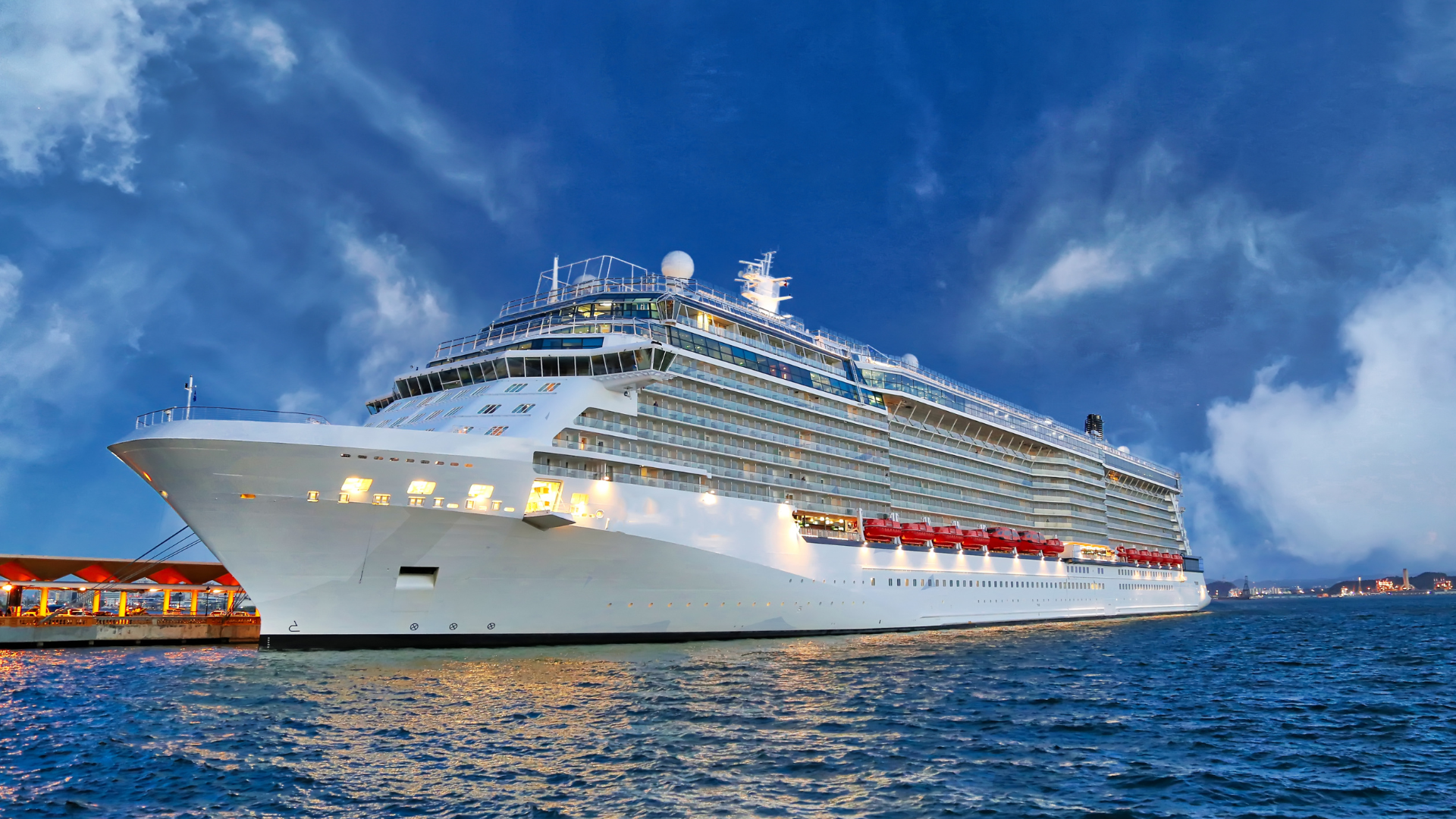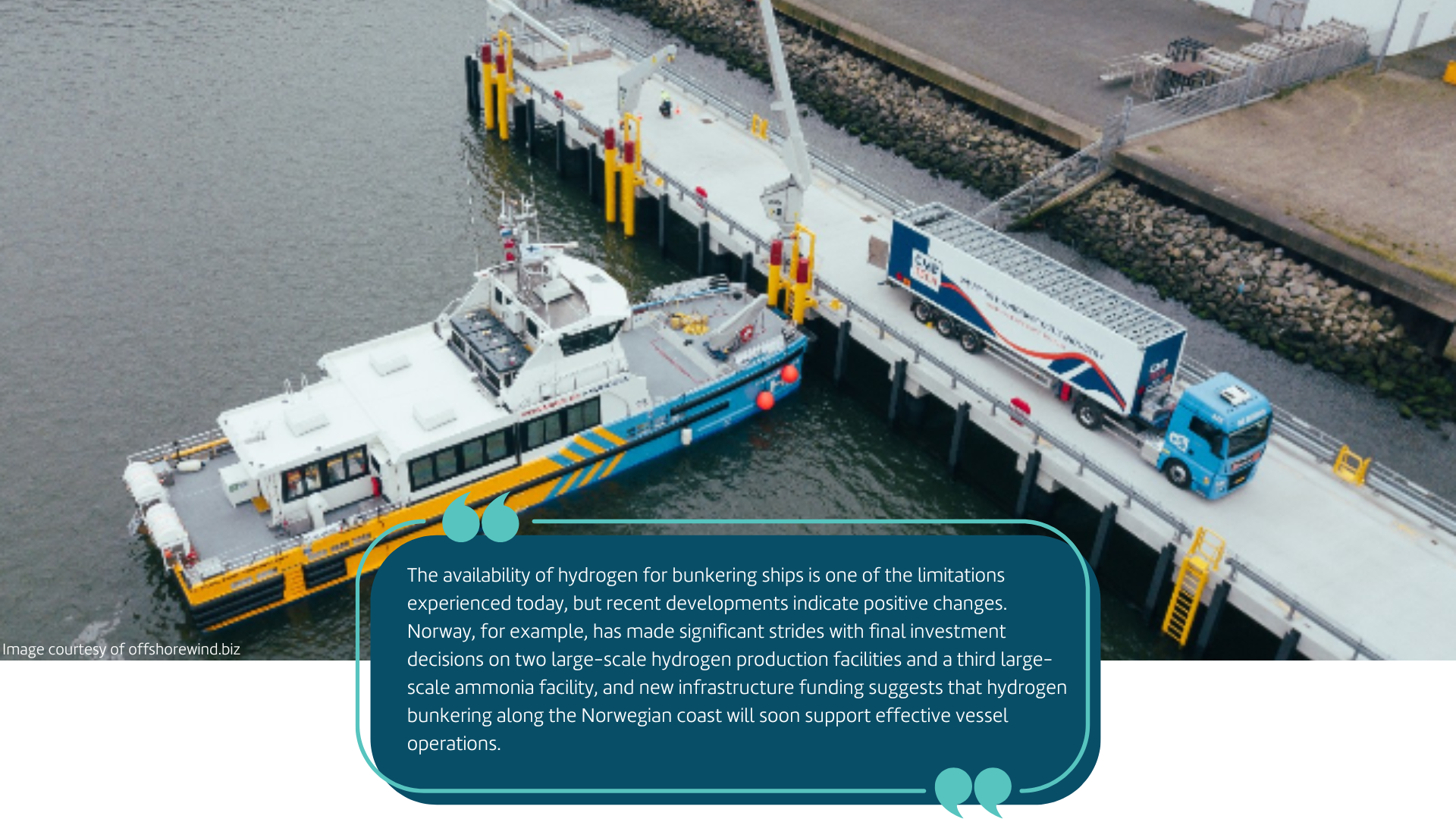
The cruise ship industry is under increasing scrutiny to reduce its environmental impact, particularly in terms of carbon dioxide emissions, which are significant contributors to global warming. As cruise ships expand in size and the range of amenities offered, their energy requirements and associated emissions will continue to increase. In parallel, the number of cruise passengers is expected to grow by 6% in 2024 to almost 36 million, indicating a robust foundation for continued growth in the sector.
Replacing traditional diesel engines with alternative fuels is a clear requirement and – as with all technology transitions - presents great opportunities, but also challenges. Here, the readiness and benefits of adopting hydrogen fuel cell technology in cruise ships and onshore applications is explored, outlining how zero-emission solutions provide a cleaner alternative to traditional fossil fuel-based systems.
The environmental imperative
At sea, a typical large cruise ship can consume up to 250 tons of fuel per day, emitting about 800kg of CO2 per metric ton of fuel burned. This results in approximately 200 tons of CO2 emissions daily per ship.
Energy is not only used in propulsion and auxiliary systems but also for hotel loads. When in port, a ship maintaining a 10MW hotel load, for instance, can emit about 6 tons of CO2 per hour based on a specific fuel oil consumption (SFOC) of 0.18 kg/kWh. This does not include other harmful emissions such as nitrogen oxides (NOx), sulfur oxides (SOx), and particulate matter, which contribute to local air pollution.
As a result, some cruise destinations are calling for the number of port calls to be restricted, and in some countries legislation is coming into effect to address emission levels. A case in point is Norway, which is aiming for zero-emission cruise operations on heritage fjords from 2026 and extending this requirement to its full coastline by 2030. Despite this requirement, Norway has seen CO2 emissions from cruise ships triple in 10 years while expecting the number of cruise port calls to increase by 28% over the next decade.
Strategies to reduce emissions have several points of focus. A key area is cleaner propulsion systems, energy efficiency and recovery. A second area is port emissions where shore power or cold ironing use zero-emission power generated onshore to replace the need to run marine engines while in port. A third area is the consideration of new fuels, where the ultimate goal is zero-emission for propulsion and hotel loads.
 Norled's MF Hydra, the world's first liquid hydrogen ferry, powered by two Ballard FCwave™ 200kW fuel cell engines
Norled's MF Hydra, the world's first liquid hydrogen ferry, powered by two Ballard FCwave™ 200kW fuel cell engines
Are fuel cells ready for the cruise industry?
Initially, zero-emission technologies, such as fuel cells, showed slow adoption rates in the maritime sector, primarily due to the lack of regulatory requirements, the need for new fuels to be available in multiple ports, and a better understanding of which technologies to adopt.
Aside from battery electric vessels, hydrogen-powered models are now in commercial operation and offer a scalable zero-emission technology for propulsion as well as hotel loads. As the first marine fuel cell to be approved by DNV and Lloyd’s Register, Ballard’s FCwave™ marine module has been deployed in both passenger ferries and goods transport, including several industry-first decarbonized vessels.
Norled’s MF Hydra - the world’s first liquid hydrogen-powered ferry - operating in Norway, recently reached its first year of operation; H2 Barge 2, a retrofitted cargo vessel, launched service on the river Rhine in Holland in March 2024; and Zulu06, the first hydrogen inland cargo transport vessel, is due to launch on the river Seine in Paris in the first half of 2024.
The successful introduction of these vessels is the culmination of multi-year developments where partners across the marine industry – integrators, vessel operators, fuel cell suppliers and fuelling infrastructure providers - are breaking new ground and initiating new zero-emission propulsion solutions, while new regulations from marine classification agencies are developed in parallel.
 Fuel cell-powered propulsion system for marine vessels
Fuel cell-powered propulsion system for marine vessels
Scaling up to cruise ship power
Adapting fuel cell technology from passenger ferries to large cruise ships involves scaling up to different operational and logistics requirements, necessitating significantly higher power outputs. At present, commercial operations are limited to 1.2MW of power, short of the power requirements of the cruise industry, but the technology is scalable to multi-MW applications.
Cruise ships, varying greatly in size, have diverse power needs ranging from 7.5-12.5MW for smaller vessels to considerably more for larger ones, depending on the propulsion and operation of all onboard systems, including amenities and facilities. This will require a larger fuel cell system , integrating redundancy and ensuring that the fuel cells operate at their optimum efficiency for minimal fuel consumption—a crucial factor for large ships.
Ballard’s scalable and modular FCwave™ module is designed to deliver multi-megawatt systems in 200kW increments, installed individually or as skid-mounted systems of 1MW, complete with integrated piping for easy integration. Installations can be configured into "power islands," with built-in redundancy that allows for the maintenance or shutdown of single units without affecting the overall operation of the vessel.
Additionally, fuel cells offer a quieter and vibration-free environment compared to traditional combustion engines. The modular arrangement, such as a group of eight modules placed side by side and back-to-back, can deliver a peak output of 1.6MW from a compact footprint of 4.8x1.6 meters. This efficient use of space is essential on cruise ships, where space and weight capacities are limited, allowing for more sustainable and efficient marine operations.
Zero-emission onshore power
To reduce the significant amount of CO2 emissions and noise pollution generated by a cruise ship’s hotel load when in port, fuel cells can provide a clean and efficient source of electricity for docked ships, enabling them to run onboard systems such as lighting, air conditioning, and refrigeration without having to rely on their diesel engines.
 While a direct grid connection for port stays typically has been the most effective way to provide clean energy for a vessel, fuel cells can provide a flexible alternative where grid connection is not possible or the required investment is too high.
While a direct grid connection for port stays typically has been the most effective way to provide clean energy for a vessel, fuel cells can provide a flexible alternative where grid connection is not possible or the required investment is too high.
These systems can be supplied as a 1-1.5MW containerized solution, including fuel cell modules, power conversion and cooling systems, supplementing the port's infrastructure by distributing electricity generated by the fuel cells to the ships. Cruise ships plug the onshore system into their onboard power systems, effectively eliminating the need to run their engines while docked.
The entire shore power process is monitored and controlled to ensure a stable power supply that meets the electrical demands of the ships. This control system includes regulating the flow of hydrogen to the fuel cells and managing their output.
Additionally, fuel cells offer the benefit of operating quietly, which is particularly advantageous in urban ports located near residential areas, as it significantly reduces noise pollution compared to traditional diesel generators.
Fuel cells for portside operations
As hydrogen availability increases, so does the potential to decarbonize port operations. Early applications for fuel cell-powered port equipment include containerized cold ironing systems, drayage trucks, and port tractors. These systems often employ a hybrid setup, combining a fuel cell with a small battery to provide quiet, zero-emission operation. The runtime of these vehicles can be easily extended by increasing the hydrogen storage capacity, and with the rapid refueling capabilities of fuel cells, operational performance is not compromised.
For port applications that require intense periods of operation, such as forklifts and other ground handling equipment, fuel cells are proving to be an efficient zero-emission solution. They combine the robust power delivery and quick refueling benefits of conventional technologies, as demonstrated by Ballard's fuel cell powered forklifts, which have accrued over 100 million hours of runtime.
The level of readiness of fuel cell application in portside operations is high and versatile. In close collaboration with port operators, Ballard has successfully deployed fuel cells for multi-modal fleets, including shunter locomotives, ships, barges, material handling equipment and trucks for last-mile delivery. Operations can also be supported by hydrogen-powered backup systems to ensure continuous power supply – enhancing port operations while significantly reducing emissions.
Infrastructure considerations

Internationally, the development of a global hydrogen market is also progressing. The International Energy Agency (IEA) noted the first-ever shipment of liquefied hydrogen from Australia to Japan in February 2022 as a key milestone. The IEA projects that, based on current developments, around 12 million tons of hydrogen could be exported annually by 2030, with 2.6 million tons becoming operational by 2026.
A sustainable solution
Reducing the CO2 footprint of the cruise industry will require a combination of energy saving measures combined with alternative fuels to reach climate targets.
Fuel cells are emerging as a proven, zero-emission power source that delivers high fuel efficiency and low maintenance, capable of supporting cruise operations at sea and when in port – potentially offering further economic and environmental synergies when deployed in “hubs” where ships and port operations use the same infrastructure.
As the technology scales up with further vessel deployments, as well as experience gained in other heavy-duty transport applications, the initial CAPEX for fuel cell power will decrease over time, while OPEX and operational efficiencies will deliver the competitive total cost of ownership required by the operators.